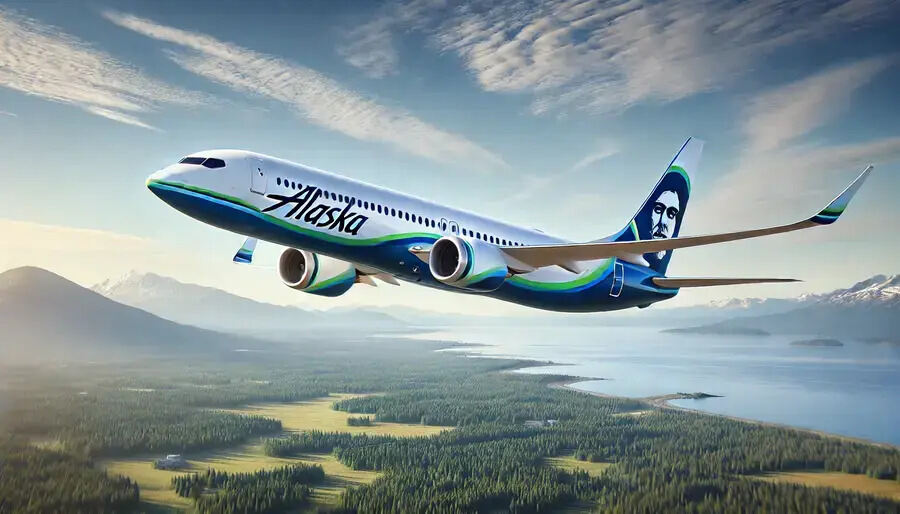 Home » AIRLINE NEWS » Alaska Airlines Sets a New Standard in Green Aviation with JetZero’s Breakthrough Blended Wing Body
Home » AIRLINE NEWS » Alaska Airlines Sets a New Standard in Green Aviation with JetZero’s Breakthrough Blended Wing Body
Wednesday, August 21, 2024
Reading Time: 2 minutes 
Alaska Airlines is making waves in the aviation world with its interest in JetZero’s innovative Blended Wing Body (BWB) aircraft. This cutting-edge design has the potential to revolutionize air travel by offering exceptional fuel efficiency and substantial environmental benefits.
JetZero has worked in close partnership with the United States Air Force (USAF), NASA, and the Federal Aviation Administration (FAA) to develop the BWB concept. This advanced design could lead to up to a 50% reduction in fuel consumption, offering airlines significant cost savings and operational advantages in the near future.
What is the Blended Wing Body?
The Blended Wing Body (BWB) represents a groundbreaking shift from the conventional tube-and-wing aircraft design that has dominated commercial aviation for over a century. Unlike traditional aircraft, which feature distinct fuselage and wing components, the BWB integrates these elements into a unified, aerodynamic structure. This creates a sleek, wing-like appearance that enhances both performance and efficiency.
JetZero envisions the BWB as the future of aviation, capable of cutting fuel consumption and emissions by up to 50%. The design also promises an improved passenger experience with higher ceilings, more storage space, and a more efficient use of cabin space.
Key Benefits of the BWB Design
- Aerodynamic Efficiency: The seamless integration of fuselage and wings reduces drag, leading to improved fuel efficiency.
- Lighter Structure: By combining the fuselage and wings, the BWB is lighter than traditional aircraft of similar size.
- Enhanced Lift-to-Drag Ratio: The large, flat surface generates more lift with less thrust and fuel.
- Increased Interior Volume: The design allows for a wider cabin, offering more space for passengers or cargo.
Why Alaska Airlines is Interested
Alaska Airlines’ interest in the JetZero BWB aligns with its goals of sustainability, operational efficiency, and enhancing the passenger experience.
Commitment to Sustainability
Alaska Airlines aims to achieve net-zero carbon emissions by 2040, ten years ahead of the industry target. The BWB’s potential to reduce fuel consumption by up to 30% makes it an attractive option for the airline’s sustainability initiatives. The reduced fuel consumption translates into fewer emissions, supporting Alaska Airlines’ goal of minimizing its environmental impact. Additionally, the aircraft’s design is compatible with emerging propulsion technologies, such as hybrid-electric or hydrogen engines, which could further decrease the airline’s carbon footprint.
Operational Efficiency
Beyond fuel savings, the BWB design offers significant operational advantages. Its large, flat structure provides increased internal volume, allowing Alaska Airlines to tailor the aircraft’s configuration for various routes and needs. The aircraft’s aerodynamic efficiency enables it to fly at higher altitudes, reducing wind resistance. With lighter materials like stitched carbon fiber, the BWB could carry more passengers while using less fuel, resulting in notable cost savings and enhanced environmental performance.
By embracing the JetZero BWB, Alaska Airlines is positioning itself as a leader in sustainable aviation and operational excellence, paving the way for a more efficient and eco-friendly future in air travel.

